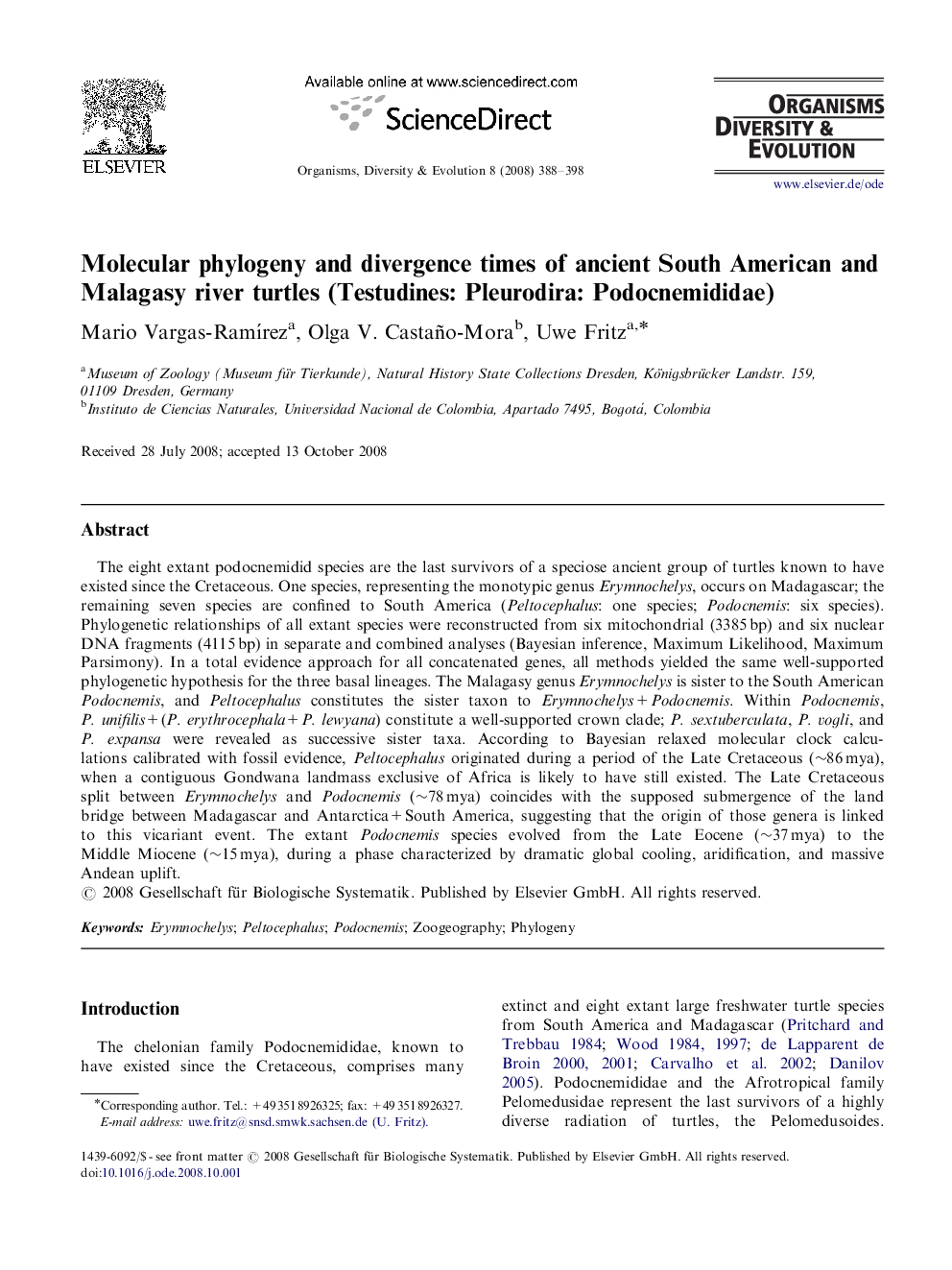| Article ID | Journal | Published Year | Pages | File Type |
|---|---|---|---|---|
| 4458641 | Organisms Diversity & Evolution | 2008 | 11 Pages |
The eight extant podocnemidid species are the last survivors of a speciose ancient group of turtles known to have existed since the Cretaceous. One species, representing the monotypic genus Erymnochelys, occurs on Madagascar; the remaining seven species are confined to South America (Peltocephalus: one species; Podocnemis: six species). Phylogenetic relationships of all extant species were reconstructed from six mitochondrial (3385 bp) and six nuclear DNA fragments (4115 bp) in separate and combined analyses (Bayesian inference, Maximum Likelihood, Maximum Parsimony). In a total evidence approach for all concatenated genes, all methods yielded the same well-supported phylogenetic hypothesis for the three basal lineages. The Malagasy genus Erymnochelys is sister to the South American Podocnemis, and Peltocephalus constitutes the sister taxon to Erymnochelys+Podocnemis. Within Podocnemis, P. unifilis+(P. erythrocephala+P. lewyana) constitute a well-supported crown clade; P. sextuberculata, P. vogli, and P. expansa were revealed as successive sister taxa. According to Bayesian relaxed molecular clock calculations calibrated with fossil evidence, Peltocephalus originated during a period of the Late Cretaceous (∼86 mya), when a contiguous Gondwana landmass exclusive of Africa is likely to have still existed. The Late Cretaceous split between Erymnochelys and Podocnemis (∼78 mya) coincides with the supposed submergence of the land bridge between Madagascar and Antarctica+South America, suggesting that the origin of those genera is linked to this vicariant event. The extant Podocnemis species evolved from the Late Eocene (∼37 mya) to the Middle Miocene (∼15 mya), during a phase characterized by dramatic global cooling, aridification, and massive Andean uplift.
